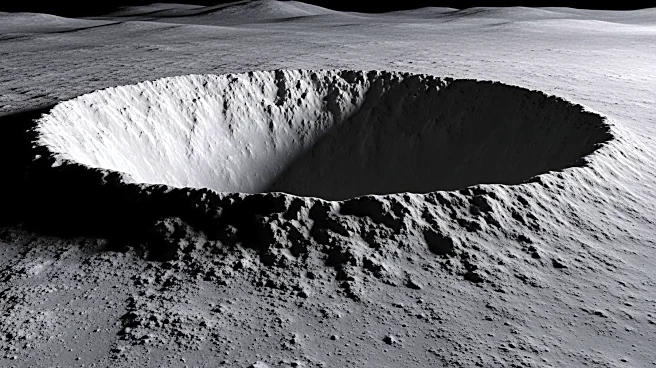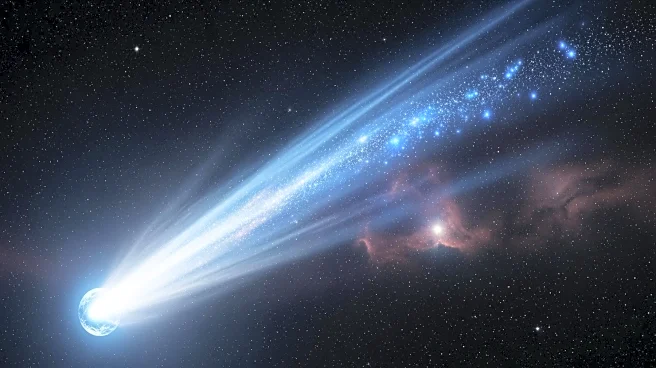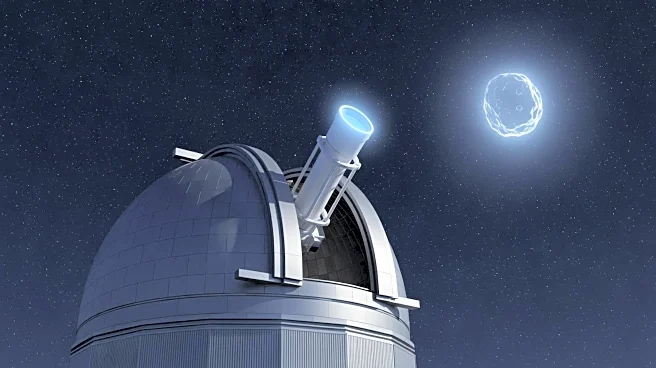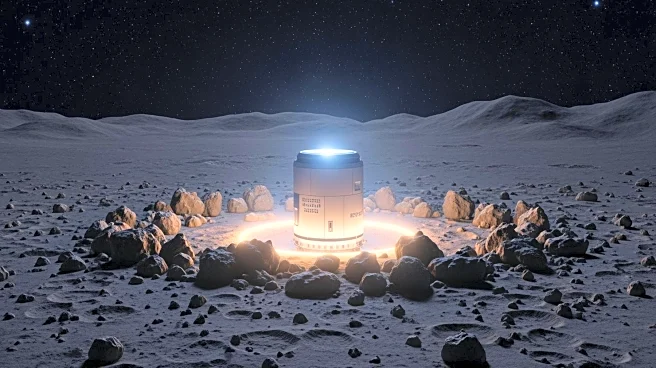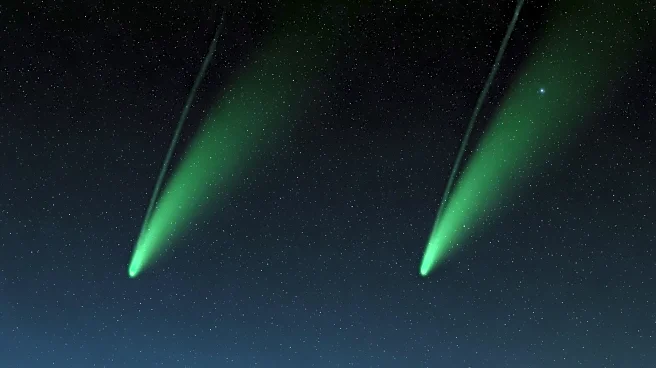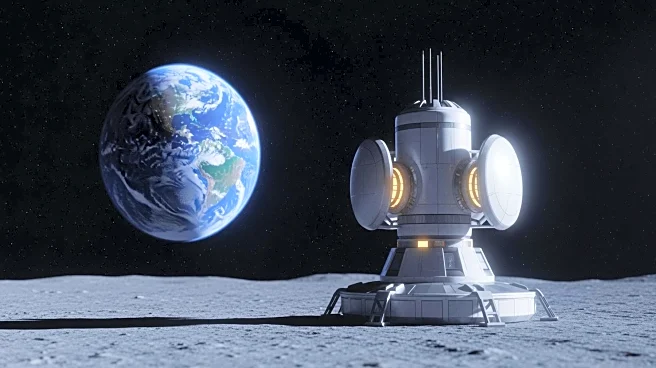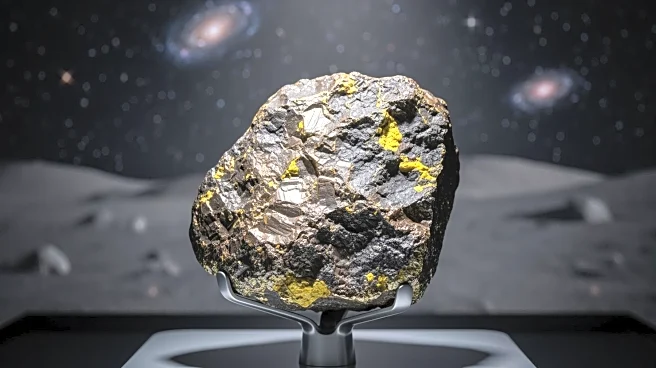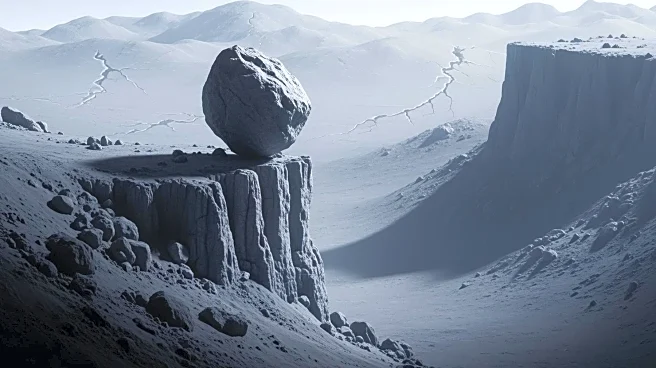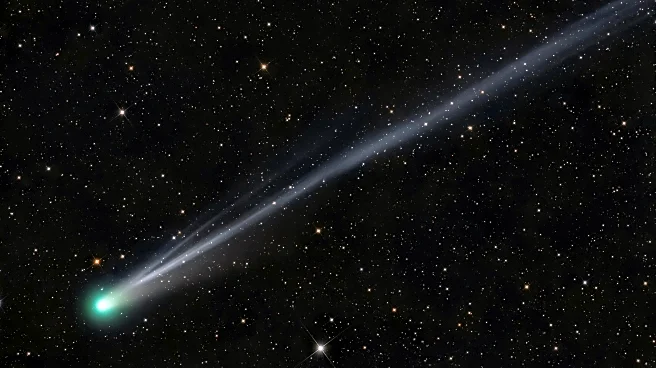What's Happening?
NASA's Artemis program is set to explore the Moon's South Pole-Aitken basin, a massive crater formed approximately 4.3 billion years ago. Recent studies from the University of Arizona have revealed new insights into the crater's formation, suggesting
the impact came from the north rather than the south as previously thought. This discovery is significant for the Artemis missions, as astronauts will land on the southern rim of the basin, allowing them to study material from the Moon's deep interior without drilling. The basin's unique geological composition includes KREEP, a concentration of potassium, rare earth elements, and phosphorus, which are crucial for understanding the Moon's formation and evolution.
Why It's Important?
The Artemis mission's exploration of the South Pole-Aitken basin is pivotal for advancing our understanding of lunar geology and the Moon's history. The basin's unique composition offers a rare opportunity to study the Moon's interior and the distribution of KREEP, which has implications for understanding the Moon's volcanic activity and crust formation. The findings could provide insights into the asymmetry between the Moon's near and far sides, potentially explaining why the near side is more volcanic. This research could also inform future lunar exploration and the development of technologies for studying other celestial bodies.
What's Next?
As the Artemis mission progresses, astronauts will collect samples from the South Pole-Aitken basin and return them to Earth for detailed analysis. These samples will allow scientists to test models of lunar evolution and the distribution of KREEP. The mission's findings could lead to a deeper understanding of the Moon's geological history and inform future missions to other parts of the Moon and beyond. The data collected may also contribute to the development of new technologies for space exploration and the study of planetary bodies.
Beyond the Headlines
The exploration of the South Pole-Aitken basin by the Artemis mission could have broader implications for planetary science and the study of celestial bodies. Understanding the Moon's geological history and the distribution of KREEP could provide insights into the processes that shape planetary bodies and their evolution. This research may also contribute to the development of new methods for studying the interiors of planets and moons, potentially leading to breakthroughs in our understanding of the solar system.
